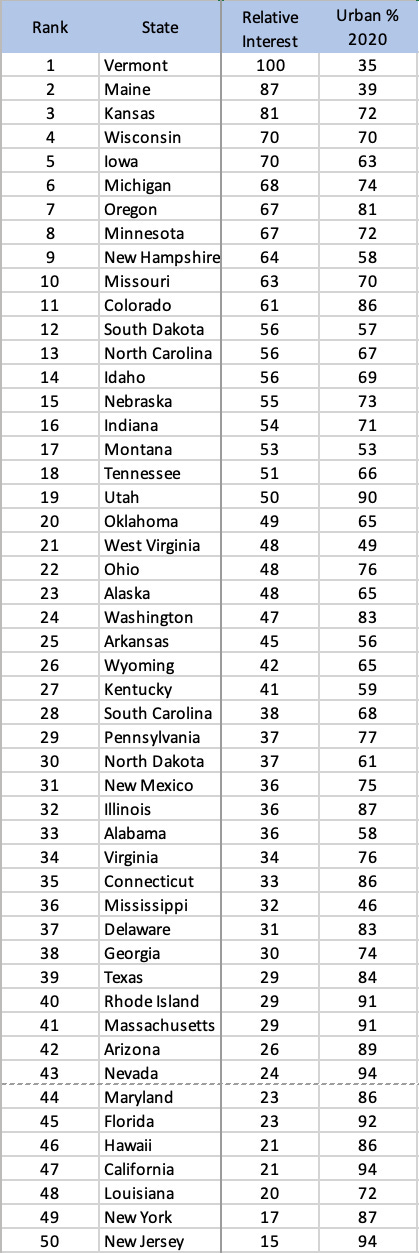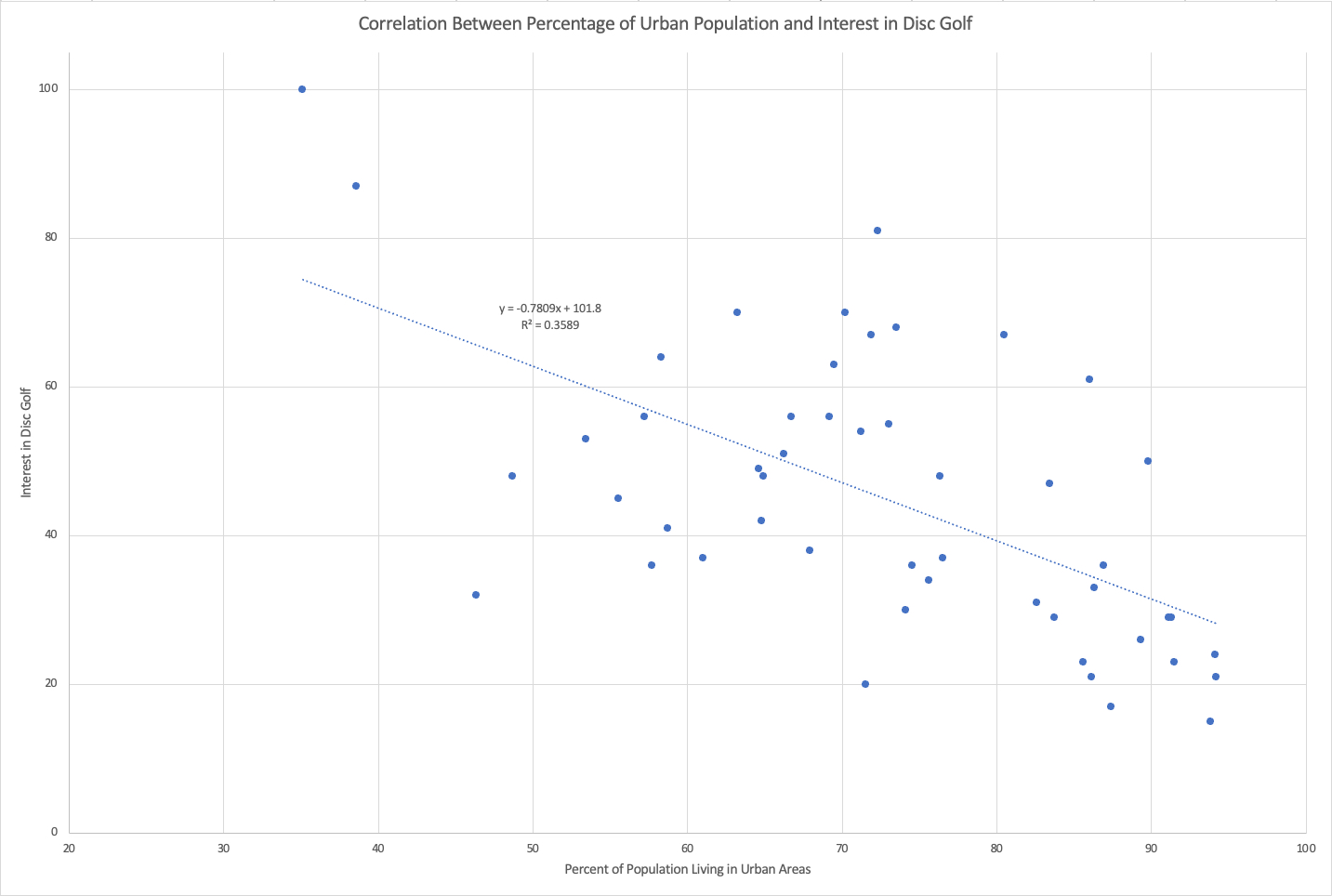State Rankings by Relative Interest in Disc Golf: Top State Is . . . Vermont?!?
A ranking of states by relative interest in disc golf using Google Trends search data shows a lot of surprises
In Disc Golf Is Sooo Much More Popular in Some Other Countries than in the US, I used Google Trends data to compare the relative interest in disc golf in different countries. This posts looks at the relative interest in disc golf in different states. Similarly to how it works for comparing interest in a topic in different countries, Google Trends assigns values to each state on a scale from 0 to 100, where the value of 100 is assigned to the state with the highest percentage of searches that relate to that topic. A value of 40 for a state would mean that the percentage of searches related to the topic in that state was only 40% as high. For example, if, in a given year, the state where the highest percentage of searches relating to disc golf was Minnesota, where 0.1% of all searches related to disc golf, and, in that same year, 0.04% of searches in the Arkansas related to disc golf, the value for Minnesota would be 100 and the value for the Arkansas would be 40.
Set forth below are the values for the relative percentages of searches relating to disc golf for each state in 2024,1 from greatest interest to least interest:
Some of the more interests findings from the list are:
Many of the states with the greatest in disc golf (based on highest percentage of searches relating to disc golf) are cold-weather states where the weather is not conducive to playing disc golf for much of the year. (Maybe not so surprising, considering how popular disc golf is in Finland, Norway and Sweden.)
Several of the states commonly thought of big disc golf states, such as California and Texas, actually rank close to the bottom in relative interest in disc golf.
There appear to be three areas with particularly high disc golf interest: Northern New England (Vermont-1, Maine-2, New Hampshire-9), the Northern Midwest (Wisconsin-4, Michigan-6, Minnesota-8), and the Plains States (Kansas-3, Iowa-5, South Dakota-12).
Two areas with relatively low disc golf interest are: the Boston-to-Washington corridor of states (Massachusetts-41, Rhode Island-40, Connecticut-35, New York-49, New Jersey-50, Delaware-37, Maryland-44) and the Southern Gulf States (Texas-39, Louisiana-48, Mississippi-36, Alabama-33, Florida-45).
The higher ranked states seem to generally have a relatively low percentage of their population living in urban areas. People in urban areas seem to show relatively little interest in disc golf, no doubt due to the lack of easily accessible courses.
Here’s a chart showing how the ranking of the states in the top 5 in 2024 changed over the years from 2010 to 2024:
All the top 2024 ranked states have always been in or close to the top 10 since 2010, except Vermont, which, over a 10-year period from 2010 to 2020 rose from the bottom half of the rankings to the top 5. I’d speculate that the opening and success of the Smugs courses (Brewster Ridge (opened 2012) and Fox Run (opened in 2015)) had something to do with it.
Here’s a chart showing how the ranking of the states in the bottom 5 in 2024 changed over the years from 2010 to 2024:
All the bottom 2024 ranked states have always been in the bottom half of the rankings. However, while New Jersey, New York and Hawaii have always been in or near the bottom 5, California and Louisiana have steadily fallen towards the bottom. One has to wonder if, in the case of California, the notorious difficulty of getting land use approved has resulted in a relatively lower rate of disc golf course creation, which has led to relatively less interest in disc golf.
Regarding the connection mentioned above between high disc golf interest and a low percentage of urban population, here’s a scatterplot and regression line showing the correlation between the two.
As shown, the percentage of a state’s population living in urban areas predicts about 36% of state’s interest in disc golf, which is a lot, but far from everything. States that have significantly more interest in disc golf than their percentage of urban population would predict include Kansas, Oregon and Colorado, while states that have significantly less interest in disc golf than their percentage of urban population would predict include Mississippi, Alabama and Louisiana.
Is the amount of interest in disc golf, as measured by Google search volume, correlated with the amount of actual participation in disc golf? See The Relationship between Search Volume and Disc Golf Growth and A Deeper Dive into the Relationship between Search Volume and Disc Golf Participation.
I used Google Trends data for searches for the “topic” of disc golf rather than searches for the words “disc golf”, because the data for the “topic” of disc golf theoretically includes searches relating to disc golf, regardless of whether the searches actually used the words “disc golf”.







